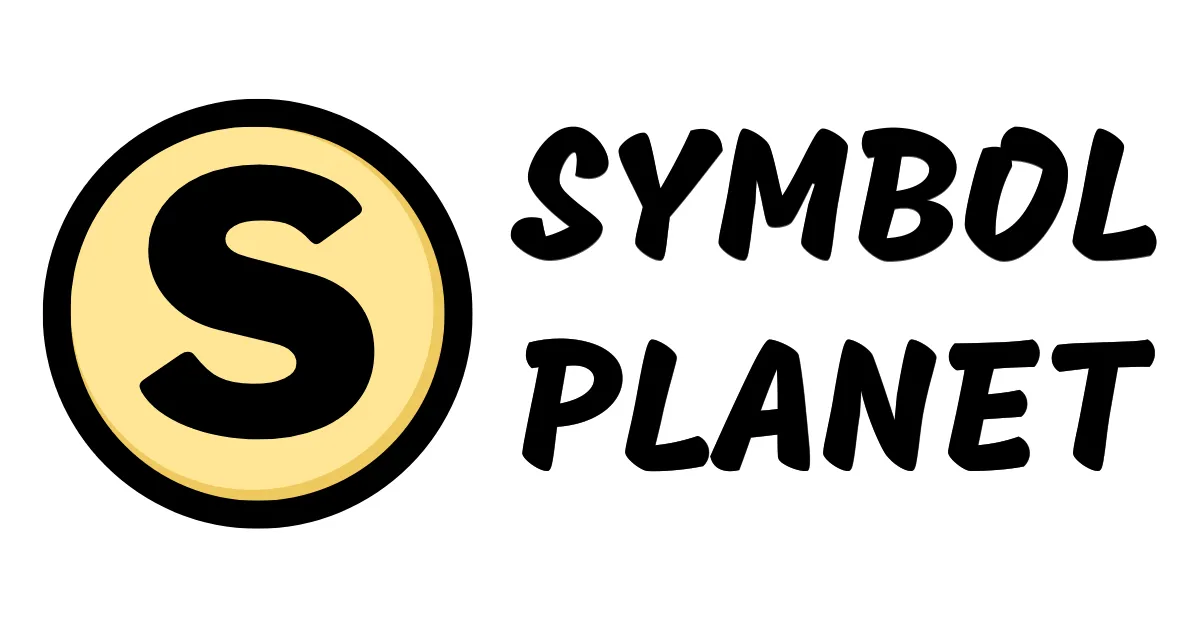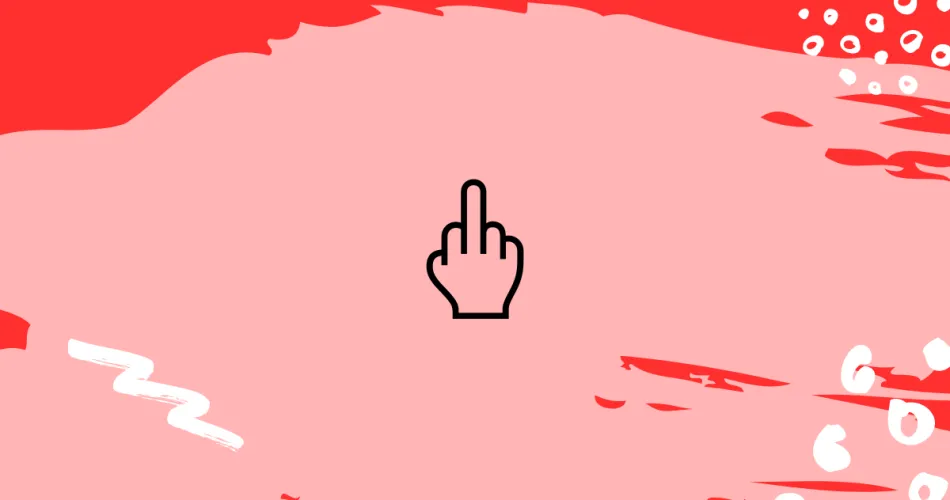Here’s what we’ll cover:
- 🖕 middle finger emoji meaning
- How do you reply to 🖕 middle finger emoji?
- What does 🖕 middle finger emoji mean from a girl?
- What does 🖕 middle finger emoji mean from a guy or boy?
- What does 🖕 middle finger emoji mean on Snapchat?
- What does 🖕 middle finger mean in Texting or Chat?
- What does 🖕 middle finger emoji mean on Instagram?
- What does 🖕 middle finger emoji mean on TikTok?
- What does 🖕 middle finger emoji mean in slang?
- Cultural differences in 🖕 emoji interpretation
- Emoji etiquettes
- Possible combination
- Misinterpretations to avoid
🖕 middle finger emoji meaning
The 🖕 middle finger emoji means expressing strong feelings of anger, frustration, or defiance. It is a hand gesture that symbolizes flipping someone off—extending the middle finger while keeping the other fingers clenched. This universal hand gesture has gained digital representation with the middle finger emoji.
1. Disdainful Gesture
When someone uses the middle finger emoji, it can be seen as a sign of disdain or contempt towards someone or something. It’s a way to show strong disagreement or disapproval.
- “I can’t believe you cancelled my favorite TV show! 🖕”
- “My ex-boyfriend cheated on me and now he’s trying to apologize? 🖕”
2. Playful Provocation
In some contexts, the middle finger emoji can also be used as a playful and lighthearted way to tease or provoke someone. It’s often used between friends as a way to joke around without any real animosity.
- “Hey buddy, remember when you embarrassed yourself at the party? 🖕”
- “When your best friend outsmarts you in a game, you can simply respond with a middle finger emoji. No hard feelings!”
3. Symbol of Rebellion
The middle finger emoji can also be interpreted as a symbol of rebellion, defiantly challenging authority or societal norms. It represents a rebellious streak or an act of defiance against the status quo.
- “Protesters expressed their frustration with the government’s actions by flashing the middle finger emoji during the rally.”
- “In a world where everyone conforms, sometimes you just have to raise a middle finger emoji to stand out.”
How do you reply to 🖕 middle finger emoji?
When responding to the middle finger emoji, it’s best to stay calm and composed. Engaging in a polite and respectful manner is important. Some possible responses include:
- “I’m sorry if I did something to upset you, but I would appreciate it if we could discuss it rationally.”
- “Let’s keep it civil and focus on resolving any issues we may have.”
- “I understand you’re upset, but responding with hostility won’t help us find a solution. Let’s talk it out instead.”
What does 🖕 middle finger emoji mean from a girl?
The 🖕 middle finger emoji from a girl means that she is expressing anger, frustration, or contempt towards someone or something. It is a rude gesture that is used to show defiance or disrespect.
- “When a girl sends you the middle finger emoji, she’s basically saying ‘Screw you!’ or ‘I’m done with you!'”
- “If a girl uses the middle finger emoji in response to a dumb joke you made, she’s telling you it was not funny at all.”
- “When a girl sends you the middle finger emoji after a heated argument, she’s letting you know she’s seriously upset.”
The emoji is often employed to make a bold statement or to emphasize someone’s irritation in a lighthearted manner. However, it’s important to consider the context in which it is used, as it can also indicate genuine anger or offense.
What does 🖕 middle finger emoji mean from a guy or boy?
The 🖕 middle finger emoji from a guy or boy means they are showing frustration, anger, or contempt. It is a gesture used to express a strong negative emotion or as an offensive way to say “screw you” without using actual words. Here are a few examples:
- “When Bob’s friend ate the last slice of pizza, Bob sent him the 🖕 emoji to show his annoyance.”
- “After losing a game, Tim received a taunting message from his opponent, including the 🖕 emoji.”
- “When Jake’s sister asked him to clean up his room for the fourth time, he responded with the 🖕 emoji as a sign of rebellion.”
Remember, it’s important to use emojis responsibly and consider the feelings of others. The 🖕 emoji may be humorous in some contexts, but it can also be hurtful if used inappropriately.
What does 🖕 middle finger emoji mean on Snapchat?
The 🖕 middle finger emoji on Snapchat means that someone is expressing anger, frustration, or contempt. It’s like giving someone the bird, but in the digital world.
- “I can’t believe they canceled my favorite show 🖕”
- “Just found out my ex is dating my best friend 🖕”
- “When someone asks me for money… 🖕”
What does 🖕 middle finger mean in Texting or Chat?
The 🖕 middle finger emoji in Texting or Chat means expressing anger, frustration, or flipping someone off. It’s like a digital way of giving someone the bird! It’s often used in response to annoying messages or when you want to show your displeasure. For example:
- “I can’t believe my boss just made me work late again 🖕”
- “That guy keeps hitting on me even after I told him I’m not interested 🖕”
- “Just saw your ex flirting with someone else 😡🖕”
What does 🖕 middle finger emoji mean on Instagram?
The 🖕 middle finger emoji on Instagram means expressing frustration, anger, or defiance. It is commonly used to show someone’s strong disagreement or annoyance towards a person, situation, or comment.
- “Can’t believe she cheated on me again 🖕”
- “When they say your favorite TV show got canceled 🖕”
- “Dealing with Monday mornings like 🖕”
What does 🖕 middle finger emoji mean on TikTok?
The 🖕 middle finger emoji on TikTok means expressing anger, frustration, or defiance in a humorous or sarcastic way. It’s often used to add a touch of rebellion or to show disapproval in a comical manner. For instance, users may employ the emoji when mockingly dismissing unpleasant situations or teasingly rebuffing haters. Here are some TikTok examples:
- “When people call you ‘basic’ just because you enjoy a pumpkin spice latte every fall 🖕”
- “Me, after spending hours on my makeup for a Zoom call just to be told ‘You’re on mute’ 🖕”
- “Trying to keep up with the latest dance trend but ending up looking like a lost penguin 🖕”
What does 🖕 middle finger emoji mean in slang?
The 🖕 middle finger emoji in slang means a gesture of disdain or defiance, often used to convey anger, frustration, or the sentiment “screw you!”
- “When someone cuts me off in traffic, I send them a virtual middle finger 🖕.”
- “I got a text from my ex asking if we could be friends again, so I replied with the middle finger emoji 🖕.”
- “After waiting in line for hours, the store sold out of the item I wanted, and all I could do was send them a middle finger emoji 🖕.”
Cultural differences in 🖕 emoji interpretation
Cultural differences play a big role in the interpretation of the 🖕 middle finger emoji, causing misunderstandings and laughter across the globe.
- “While Americans may use the middle finger emoji to express frustration or anger, in some Middle Eastern cultures, it can be seen as a humorous gesture to indicate good luck.”
- “In Japan, the 🖕 emoji is associated with a popular game character, making it a playful and innocent gesture.”
- “Meanwhile, in some African countries, it’s not commonly recognized, leaving people confused or thinking it represents an index finger waving hello.”
Emoji etiquettes
When using the 🖕 middle finger emoji, it’s important to be mindful of its intended meaning and context. It is generally best reserved for light-hearted and comical situations, like playfully teasing a friend or expressing frustration in a humorous way.
- “I told my mom I’d clean my room, but instead I sent her a text with the middle finger emoji and said ‘Sorry, I’m busy’.”
- “My neighbor played his music too loud, so I sent him a text with the 🖕emoji and wrote ‘Hope you enjoy my karaoke nights too!'”
- “After losing a bet, I texted my friend with the middle finger emoji and wrote ‘I guess I’ll never trust your predictions again!'”
Possible combination
Possible emoji combinations that go with 🖕 middle finger emoji include 💩 poop emoji, 😂 crying laughing emoji, and 🙄 eye roll emoji.
- “When your boss asks you to work late on a Friday 🖕 💩”
- “When someone tells you pineapple belongs on pizza 🖕 😂”
- “When you get stuck in traffic again 🖕 🙄”
Misinterpretations to avoid
Misinterpretations to avoid for 🖕 middle finger emoji: Don’t mistake it as a signal for “I need an extra digit to count with” or “Check out my new tiny flashlight.” Keep it for special occasions only.
- “When your friend asks for a favor, don’t reply with 🖕 thinking it implies ‘I’m too busy farming carrots in Harvest Moon.'”
- “Avoid sending 🖕 to your professor, even if you believe their assignment deserves a ‘digitally enhanced’ critique.”
- “Refrain from using 🖕 as a response to ‘Who wants an extra slice of pizza?’. You don’t want it to mean ‘I’d rather nibble on kale chips.'”

